| Michael Crichton |

|
| Born |
John Michael Crichton
October 23, 1942
Chicago, Illinois, U.S. |
| Died |
November 4, 2008 (aged 66)
Los Angeles, California, U.S. |
| Pen name |
John Lange
Jeffery Hudson
Michael Douglas |
| Occupation |
Author, screenwriter, film director, film producer, television producer, physician |
| Language |
English |
| Nationality |
American |
| Education |
Harvard University B.S.
Harvard Medical School M.D. |
| Period |
1966–2008 |
| Genre |
Action, adventure, science fiction, techno-thriller |
| Notable awards |
1969 Edgar Award |
| Spouse |
Joan Radam (1965–1970)
Kathy St. Johns (1978–1980)
Suzanne Childs (1981–1983)
Anne-Marie Martin (1987–2003)
Sherri Alexander (2005–2008; his death) |
| Children |
2 |
|
| Signature |
 |
| Website |
| www.crichton-official.com |
John Michael Crichton (; October 23, 1942 – November 4, 2008) was an American best-selling author, screenwriter, film director, producer, and former physician best known for his work in the science fiction, medical fiction and thriller genres. His books have sold over 200 million copies worldwide, and many have been adapted into films. In 1994, Crichton became the only creative artist ever to have works simultaneously charting at No. 1 in US television (ER), film (Jurassic Park), and book sales (Disclosure).[2]
His literary works are usually within the action genre and heavily feature technology. His novels epitomize the techno-thriller genre of literature, often exploring technology and failures of human interaction with it, especially resulting in catastrophes with biotechnology. Many of his future history novels have medical or scientific underpinnings, reflecting his medical training and science background. He wrote, among other works, The Andromeda Strain (1969), Congo (1980), Sphere (1987), Travels (1988), Jurassic Park (1990), Rising Sun (1992), Disclosure (1994), The Lost World (1995), Airframe (1996), Timeline (1999), Prey (2002), State of Fear (2004), Next (2006; the final book published before his death), Pirate Latitudes (2009), an unfinished techno-thriller, Micro, which was published in November 2011, and Dragon Teeth, a historical novel set during the “Bone Wars“, which will be published worldwide in May 2017.[3]
Early life and education
John Michael Crichton[4] was born on October 23, 1942, in Chicago, Illinois,[5][6][7][8] to John Henderson Crichton, a journalist, and Zula Miller Crichton. He was raised on Long Island, in Roslyn, New York,[4] and showed a keen interest in writing from a young age; at 14, he had a column related to travel published in The New York Times.[2] Crichton had always planned on becoming a writer and began his studies at Harvard College in 1960.[2] During his undergraduate study in literature, he conducted an experiment to expose a professor who he believed was giving him abnormally low marks and criticizing his literary style.[9]:4 Informing another professor of his suspicions,[10]Crichton submitted an essay by George Orwell under his own name. The paper was returned by his unwitting professor with a mark of “B−”.[11][12] His issues with the English department led Crichton to switch his undergraduate concentration; he obtained his bachelor’s degree in biological anthropology summa cum laude in 1964[13] and was initiated into the Phi Beta Kappa Society.[13] He received a Henry Russell Shaw Traveling Fellowship from 1964 to 1965 and was a visiting lecturer in Anthropology at the University of Cambridge in the United Kingdom in 1965.[13]
Crichton later enrolled at Harvard Medical School, when he began publishing work.[9][page needed] By this time he had become exceptionally tall; by his own account he was approximately 6 feet 9 inches (2.06 m) tall in 1997.[14][15]In reference to his height, while in medical school, he began writing novels under the pen names “John Lange”[16] and “Jeffrey Hudson”[17] (“Lange” is a surname in Germany, meaning “long”, and Sir Jeffrey Hudson was a famous 17th-century dwarf in the court of Queen consort Henrietta Maria of England).
He later described his Lange books in the following way: “My feeling about the Lange books is that my competition is in-flight movies. One can read the books in an hour and a half, and be more satisfactorily amused than watching Doris Day. I write them fast and the reader reads them fast and I get things off my back.”[18][19]
In Travels he recalls overhearing doctors, who were unaware that he was the author, discussing the flaws in his book The Andromeda Strain.[9][page needed]
A Case of Need, written under the Hudson pseudonym, won him his first Edgar Award for Best Novel in 1969.[20]
He also co-wrote Dealing: or the Berkeley-to-Boston Forty-Brick Lost-Bag Blues (1970) with his younger brother Douglas, under the shared pen name “Michael Douglas”. The back cover of that book carried a picture, taken by their mother, of Michael and Douglas when very young.[citation needed]
During his clinical rotations at the Boston City Hospital, Crichton grew disenchanted with the culture there, which appeared to emphasize the interests and reputations of doctors over the interests of patients.[9][page needed] He graduated from Harvard, obtaining an MD in 1969,[21] and undertook a post-doctoral fellowship study at the Salk Institute for Biological Studies in La Jolla, California, from 1969 to 1970.[citation needed] He never obtained a license to practice medicine, devoting himself to his writing career instead.[22]
Reflecting on his career in medicine years later, Crichton concluded that patients too often shunned responsibility for their own health, relying on doctors as miracle workers rather than advisors. He experimented with astral projection, aura viewing, and clairvoyance, coming to believe that these included real phenomena that scientists had too eagerly dismissed as paranormal.[9][page needed]
In 1988, Crichton was a visiting writer at the Massachusetts Institute of Technology.[23]
Writing career
Fiction
Odds On was Michael Crichton’s first published novel. It was published in 1966, under the pseudonym of John Lange. It is a 215-page paperback novel which describes an attempted robbery in an isolated hotel on Costa Brava. The robbery is planned scientifically with the help of a critical path analysis computer program, but unforeseen events get in the way.
The following year, he published Scratch One. The novel relates the story of Roger Carr, a handsome, charming and privileged man who practices law, more as a means to support his playboy lifestyle than a career. Carr is sent to Nice, France, where he has notable political connections, but is mistaken for an assassin and finds his life in jeopardy, implicated in the world of terrorism.
In 1968, he published two novels, Easy Go and A Case of Need, the second of which was re-published in 1993, under his real name. Easy Go relates the story of Harold Barnaby, a brilliant Egyptologist, who discovers a concealed message while translating hieroglyphics, informing him of an unnamed Pharaoh whose tomb is yet to be discovered. A Case of Need, on the other hand, was a medical thriller in which a Boston pathologist, Dr. John Berry, investigates an apparent illegal abortion conducted by an obstetrician friend, which caused the early demise of a young woman. The novel would prove a turning point in Crichton’s future novels, in which technology is important in the subject matter, although this novel was as much about medical practice. The novel earned him an Edgar Award in 1969.
In 1969, Crichton published three novels. The first, Zero Cool, dealt with an American radiologist on vacation in Spain who is caught in a murderous crossfire between rival gangs seeking a precious artifact. The second, The Andromeda Strain, would prove to be the most important novel of his career and establish him as a best-selling author. The novel documented the efforts of a team of scientists investigating a deadly extraterrestrialmicroorganism that fatally clots human blood, causing death within two minutes. The novel became an instant success, and it was turned into a 1971 film. Crichton’s third novel of 1969, The Venom Business relates the story of a smuggler who uses his exceptional skill as a snake handler to his advantage by importing snakes to be used by drug companies and universities for medical research. The snakes are simply a ruse to hide the presence of rare Mexican artifacts. In 1969, Crichton also wrote a review for The New Republic (as J. Michael Crichton), critiquing Slaughterhouse Five by Kurt Vonnegut.[24]
In 1970, Crichton again published three novels: Drug of Choice, Grave Descend and Dealing: or the Berkeley-to-Boston Forty-Brick Lost-Bag Blues with his younger brother Douglas Crichton. Dealing, was written under the pen name ‘Michael Douglas’, using their first names. This novel was adapted to the big screen and set a wave for his brother Douglas as well as himself. Grave Descend earned him an Edgar Award nomination the following year.[25]
In 1972, Crichton published two novels. The first, Binary, relates the story of a villainous middle-class businessman, who attempts to assassinate the President of the United States by stealing an army shipment of the two precursor chemicals that form a deadly nerve agent. The second, The Terminal Man, is about a psychomotor epileptic sufferer, Harry Benson, who in regularly suffering seizures followed by blackouts, conducts himself inappropriately during seizures, waking up hours later with no knowledge of what he has done. Believed to be psychotic, he is investigated; electrodes are implanted in his brain, continuing the preoccupation in Crichton’s novels with machine-human interaction and technology. The novel was adapted into a film directed by Mike Hodges and starring George Segal, Joan Hackett, Richard A. Dysart and Donald Moffat, released in June 1974. However, neither the novel nor the film was well received by critics.[citation needed]
In 1975, Crichton ventured into the nineteenth century with his historical novel The Great Train Robbery, which would become a bestseller. The novel is a recreation of the Great Gold Robbery of 1855, a massive gold heist, which takes place on a train traveling through Victorian era England. A considerable portion of the book was set in London. The novel was later made into a 1979 film directed by Crichton himself, starring Sean Connery and Donald Sutherland. The film would go on to be nominated for Best Cinematography Award by the British Society of Cinematographers, also garnering an Edgar Allan Poe Award for Best Motion Picture by the Mystery Writers Association of America.
In 1976, Crichton published Eaters of the Dead, a novel about a tenth-century Muslim who travels with a group of Vikings to their settlement. Eaters of the Dead is narrated as a scientific commentary on an old manuscript and was inspired by two sources. The first three chapters retell Ahmad ibn Fadlan‘s personal account of his journey north and his experiences in encountering the Rus’, the early Russian peoples, whilst the remainder is based upon the story of Beowulf, culminating in battles with the ‘mist-monsters’, or ‘wendol’, a relict group of Neanderthals. The novel was adapted into film as The 13th Warrior, initially directed by John McTiernan, who was later fired with Crichton himself taking over direction.
In 1980, Crichton published the novel Congo, which centers on an expedition searching for diamonds in the tropical rain forest of Congo. The novel was loosely adapted into a 1995 film, starring Laura Linney, Tim Curry, and Ernie Hudson.
Seven years later, Crichton published Sphere, a novel which relates the story of psychologist Norman Johnson, who is required by the U.S. Navy to join a team of scientists assembled by the U.S. Government to examine an enormous alien spacecraft discovered on the bed of the Pacific Ocean, and believed to have been there for over 300 years. The novel begins as a science fiction story, but rapidly changes into a psychological thriller, ultimately exploring the nature of the human imagination. The novel was adapted into the film Sphere in 1998, directed by Barry Levinson, with a cast including Dustin Hoffman as Norman Johnson, (renamed Norman Goodman), Samuel L. Jackson, Liev Schreiber and Sharon Stone.

Crichton’s novel Jurassic Park, and its sequels, were made into films that became a part of popular culture, with related parks established in places as far afield as Kletno, Poland.
In 1990, Crichton published the novel Jurassic Park. Crichton utilized the presentation of “fiction as fact“, used in his previous novels, Eaters of the Dead and The Andromeda Strain. In addition, chaos theory and its philosophical implications are used to explain the collapse of an amusement park in a “biological preserve” on Isla Nublar, an island west of Costa Rica. Paleontologist Alan Grant and his paleobotanist graduate student, Ellie Sattler, are brought in by billionaire John Hammond to investigate. The park is revealed to contain genetically recreated dinosaur species, including Dilophosaurus, Velociraptor, Triceratops, Stegosaurus, and Tyrannosaurus rex, among others. They have been recreated using damaged dinosaur DNA, found in mosquitoes that sucked saurian blood and were then trapped and preserved in amber.
Crichton had originally conceived a screenplay about a graduate student who recreates a dinosaur, but decided to explore his fascination with dinosaurs and cloning until he began writing the novel.[26] Spielberg learned of the novel in October 1989, while he and Crichton were discussing a screenplay that would become the television series ER. Before the book was published, Crichton demanded a non-negotiable fee of $1.5 million as well as a substantial percentage of the gross. Warner Bros. and Tim Burton, Sony Pictures Entertainment and Richard Donner, and 20th Century Fox and Joe Dante bid for the rights,[27] but Universal eventually acquired them in May 1990, for Spielberg.[28] Universal paid Crichton a further $500,000 to adapt his own novel,[29] which he had completed by the time Spielberg was filming Hook. Crichton noted that because the book was “fairly long”, his script only had about 10–20 percent of the novel’s content.[30] The film, directed by Spielberg, was eventually released in 1993, starring Sam Neill as Dr. Alan Grant, Laura Dern as Dr. Ellie Sattler, Jeff Goldblum as Dr. Ian Malcolm (the chaos theorist), and Richard Attenborough, as John Hammond, the billionaire CEO, of InGen. The film would go on to become extremely successful.
In 1992, Crichton published the novel Rising Sun, an international best-selling crime thriller about a murder in the Los Angeles headquarters of Nakamoto, a fictional Japanese corporation. The book was instantly adapted into a film, released the same year of the movie adaption of Jurassic Park in 1993, and starring Sean Connery, Wesley Snipes, Tia Carrere and Harvey Keitel.
His next novel, Disclosure, published in 1994, addresses the theme of sexual harassment previously explored in his 1972 Binary. Unlike that novel however, Crichton centers on sexual politics in the workplace, emphasizing an array of paradoxes in traditional gender functions, by featuring a male protagonist who is being sexually harassed by a female executive. As a result, the book has been harshly criticized by feminist commentators and accused of anti-feminism. Crichton, anticipating this response, offered a rebuttal at the close of the novel which states that a “role-reversal” story uncovers aspects of the subject that would not be as easily seen with a female protagonist. The novel was made into a film the same year by Barry Levinson, and starring Michael Douglas, Demi Moore and Donald Sutherland.
Crichton then published The Lost World in 1995, as the sequel to Jurassic Park. It was made into a film sequel two years later in 1997, again directed by Spielberg and starring Jeff Goldblum, Julianne Moore, Vince Vaughn and Pete Postlethwaite.
Then, in 1996, Crichton published Airframe, an aero-techno-thriller which relates the story of a quality assurance vice-president at the fictional aerospace manufacturer Norton Aircraft, as she investigates an in-flight accident aboard a Norton-manufactured airliner that leaves three passengers dead and fifty-six injured. Again, Crichton uses the false document literary device, presenting numerous technical documents to create a sense of authenticity. In the novel, Crichton draws from real life accidents to increase its sensation of realism, including American Airlines Flight 191 and Aeroflot Flight 593; the latter flew from Moscow’s Sheremetyevo International Airport and crashed on its way to Hong Kong’s Kai Tak Airport in 1994. Crichton challenges the public perception of air safety and the consequences of exaggerated media reports to sell the story. The book also continues Crichton’s overall theme of the failure of humans in human-machine interaction, given that the plane itself worked perfectly and the accident would not have occurred had the pilot reacted properly.
In 1999, Crichton published Timeline, a science fiction novel which tells the story of a team of historians and archaeologists studying a site in the Dordogne region of France, where the medieval towns of Castelgard and La Roque stood. They time travel back to 1357 to uncover some startling truths. The novel, which continues Crichton’s long history of combining technical details and action in his books, addresses quantum physics and time travel directly and received a warm welcome from medieval scholars, who praised his depiction of the challenges in studying the Middle Ages.[31]
The novel quickly spawned Timeline Computer Entertainment, a computer game developer that created the Timeline PC game published by Eidos Interactive in 2000. A film based on the book was released in 2003, by Paramount Pictures, with a screen adaptation by Jeff Maguire and George Nolfi, under the direction of Richard Donner. The film stars Paul Walker, Gerard Butler and Frances O’Connor.
In 2002, Crichton published Prey, a cautionary tale about developments in science and technology; specifically nanotechnology. The novel explores relatively recent phenomena engendered by the work of the scientific community, such as artificial life, emergence (and by extension, complexity), genetic algorithms, and agent-based computing. Reiterating components in many of his other novels, Crichton once again devises fictional companies, this time Xymos, a nanorobotics company which is claimed to be on the verge of perfecting a revolutionary new medical imaging technology based on nanotechnology and a rival company, MediaTronics.
In 2004, Crichton published State of Fear, a novel concerning eco-terrorists who attempt mass murder to support their views. Global warming serves as a central theme to the novel, although a review in Nature found it “likely to mislead the unwary”.[32] The novel had an initial print run of 1.5 million copies and reached the No. 1 bestseller position at Amazon.com and No. 2 on The New York Times Best Seller list for one week in January 2005.[33][34]
The last novel published while he was still living was Next, in 2006. The novel follows many characters, including transgenic animals, in the quest to survive in a world dominated by genetic research, corporate greed, and legal interventions, wherein government and private investors spend billions of dollars every year on genetic research.
Pirate Latitudes was found as a manuscript on one of his computers after his death and was published in November 2009.[3] Additionally, Crichton had completed the outline for and was roughly a third of the way through a novel titled Micro.[3][35] Micro was completed by Richard Preston and was published in November 2011.[35]
On July 28, 2016, Michael Crichton’s website and HarperCollins published a press release saying that a new Michael Crichton novel will be published in May 2017 called Dragon Teeth.[36][37]
Non-fiction

Crichton’s first published book of non-fiction, Five Patients, recounts his experiences of practices in the late 1960s at Massachusetts General Hospital and the issues of costs and politics within American health care.
Aside from fiction, Crichton wrote several other books based on medical or scientific themes, often based upon his own observations in his field of expertise. In 1970, he published Five Patients, a book which recounts his experiences of hospital practices in the late 1960s at Massachusetts General Hospital in Boston, Massachusetts. The book follows each of five patients through their hospital experience and the context of their treatment, revealing inadequacies in the hospital institution at the time. The book relates the experiences of Ralph Orlando, a construction worker seriously injured in a scaffold collapse; John O’Connor, a middle-aged dispatcher suffering from fever that has reduced him to a delirious wreck; Peter Luchesi, a young man who severs his hand in an accident; Sylvia Thompson, an airline passenger who suffers chest pains; and Edith Murphy, a mother of three who is diagnosed with a life-threatening disease. In Five Patients, Crichton examines a brief history of medicine up to 1969, to help place hospital culture and practice into context, and addresses the costs and politics of American health care.
As a personal friend of the artist Jasper Johns, Crichton compiled many of his works in a coffee table book, published as Jasper Johns. It was originally published in 1970, by Harry N. Abrams, Inc. in association with the Whitney Museum of American Art, and again in January 1977, with a second revised edition published in 1994.
In 1983, Crichton wrote Electronic Life, a book that introduces BASIC programming to its readers. The book, written like a glossary, with entries such as “Afraid of Computers (everybody is)”, “Buying a Computer”, and “Computer Crime”, was intended to introduce the idea of personal computers to a reader who might be faced with the hardship of using them at work or at home for the first time. It defined basic computer jargon and assured readers that they could master the machine when it inevitably arrived. In his words, being able to program a computer is liberation; “In my experience, you assert control over a computer—show it who’s the boss—by making it do something unique. That means programming it….If you devote a couple of hours to programming a new machine, you’ll feel better about it ever afterwards”.[38] In the book, Crichton predicts a number of events in the history of computer development, that computer networks would increase in importance as a matter of convenience, including the sharing of information and pictures that we see online today which the telephone never could. He also makes predictions for computer games, dismissing them as “the hula hoops of the ’80s”, and saying “already there are indications that the mania for twitch games may be fading.” In a section of the book called “Microprocessors, or how I flunked biostatistics at Harvard”, Crichton again seeks his revenge on the medical school teacher who had given him abnormally low grades in college. Within the book, Crichton included many self-written demonstrative Applesoft (for Apple II) and BASICA (for IBM PC compatibles) programs.
In 1988, he published Travels, which also contains autobiographical episodes covered in a similar fashion to his 1970 book Five Patients.
Literary techniques
Crichton’s novels, including Jurassic Park, have been described by The Guardian as “harking back to the fantasy adventure fiction of Sir Arthur Conan Doyle, Jules Verne, Edgar Rice Burroughs, and Edgar Wallace, but with a contemporary spin, assisted by cutting-edge technology references made accessible for the general reader”.[39] According to The Guardian, “Michael Crichton wasn’t really interested in characters, but his innate talent for storytelling enabled him to breathe new life into the science fiction thriller”.[39] Like The Guardian, The New York Times has also noted the boys’ adventure quality to his novels interfused with modern technology and science. According to The New York Times,
All the Crichton books depend to a certain extent on a little frisson of fear and suspense: that’s what kept you turning the pages. But a deeper source of their appeal was the author’s extravagant care in working out the clockwork mechanics of his experiments—the DNA replication in Jurassic Park, the time travel in Timeline, the submarine technology in Sphere. The novels have embedded in them little lectures or mini-seminars on, say, the Bernoulli principle, voice-recognition software or medieval jousting etiquette … The best of the Crichton novels have about them a boys’ adventure quality. They owe something to the Saturday-afternoon movie serials that Mr. Crichton watched as a boy and to the adventure novels of Arthur Conan Doyle (from whom Mr. Crichton borrowed the title The Lost World and whose example showed that a novel could never have too many dinosaurs). These books thrive on yarn spinning, but they also take immense delight in the inner workings of things (as opposed to people, women especially), and they make the world—or the made-up world, anyway—seem boundlessly interesting. Readers come away entertained and also with the belief, not entirely illusory, that they have actually learned something”
Crichton’s works were frequently cautionary; his plots often portrayed scientific advancements going awry, commonly resulting in worst-case scenarios. A notable recurring theme in Crichton’s plots is the pathological failure of complex systems and their safeguards, whether biological (Jurassic Park), military/organizational (The Andromeda Strain), technical (Airframe), or cybernetic (Westworld). This theme of the inevitable breakdown of “perfect” systems and the failure of “fail-safe measures” can be seen strongly in the poster for Westworld, whose slogan was, “Where nothing can possibly go worng [sic]”, and in the discussion of chaos theory in Jurassic Park. His 1973 movie Westworld contains one of the earliest references to a computer virus, and the first mention of the concept of a computer virus in a movie.[41] Crichton believed, however, that his view of technology had been misunderstood as
being out there, doing bad things to us people, like we’re inside the circle of covered wagons and technology is out there firing arrows at us. We’re making the technology and it is a manifestation of how we think. To the extent that we think egotistically and irrationally and paranoically and foolishly, then we have technology that will give us nuclear winters or cars that won’t brake. But that’s because people didn’t design them right.[42]
The use of author surrogate was a feature of Crichton’s writings from the beginning of his career. In A Case of Need, one of his pseudonymous whodunit stories, Crichton used first-person narrative to portray the hero, a Bostonian pathologist, who is running against the clock to clear a friend’s name from medical malpractice in a girl’s death from a hack-job abortion.
Some of Crichton’s fiction used a literary technique called false document. For example, Eaters of the Dead is a fabricated recreation of the Old English epic Beowulf in the form of a scholarly translation of Ahmad ibn Fadlan‘s 10th-century manuscript. Other novels, such as The Andromeda Strain and Jurassic Park, incorporated fictionalized scientific documents in the form of diagrams, computer output, DNA sequences, footnotes and bibliography. Some of his novels, such as The Terminal Man and State of Fear, included authentic published scientific works to illustrate his point.
Crichton sometimes used a premise in which a diverse group of “experts” or specialists are assembled to tackle a unique problem requiring their individual talents and knowledge. This was done in Andromeda Strain as well as Sphere, Jurassic Park, and to a far lesser extent Timeline. Sometimes the individual characters in this dynamic work in the private sector and are suddenly called upon by the government to form an immediate response team once some incident or discovery triggers their mobilization. This premise or plot device has been imitated and used by other authors and screenwriters in several books, movies and television shows since.
At the prose level, one of Crichton’s trademarks was the single-word paragraph: a dramatic question answered by a single word on its own as a paragraph.
Works
Novels]
Non-fiction[edit]
Short stories
| Year |
Title |
Originally published |
Notes |
| 1957 |
“Johnny at 8:30” |
First Words (1993) |
poem |
| 1960 |
“[Untitled]” |
First Words (1993) |
fan titled Well, Nothing. |
| 1961 |
“Life Goes to a Party” |
First Words (1993) |
|
| 1961 |
“The Most Important Part of the Lab” |
First Words (1993) |
|
| 1968 |
“Villa of Assassins” |
Stag Annual (1968) |
as John Lange; excerpted from Scratch One (1967) |
| 1968 |
“How Does That Make You Feel?” |
Playboy (November 1968) |
as Jeffrey Hudson |
| 1970 |
“The Death Divers” |
Man’s World (December 1970) |
as John Lange; excerpted from Grave Descend (1970) |
| 1971 |
“The Most Powerful Tailor in the World” |
Playboy (September 1971) |
|
| 1984 |
“Mousetrap: A Tale of Computer Crime” |
Life (January 1984) |
|
| 2003 |
“Blood Doesn’t Come Out” |
McSweeney’s Mammoth Treasury of Thrilling Tales (2003) |
|
As a film director and screenwriter
The first film based on one of his works was The Andromeda Strain (1971), based on his first professionally published novel of the same name, released in 1969. Crichton then wrote three episodes for the television series Insight in the early 1970s. He made his directing debut with Pursuit (1972), a TV movie based on his novel Binary.
Crichton wrote and directed the 1973 science fiction western-thriller film Westworld, which was his feature film directorial debut. It was the first feature film using 2D computer-generated imagery (CGI).
He wrote and directed the suspense film Coma, adapted from a Robin Cook novel. There are other similarities in terms of genre and the fact that both Cook and Crichton had medical degrees, were of similar age, and wrote about similar subjects.
Other films written and directed by Crichton were The Great Train Robbery (1979), Looker (1981), Runaway (1984) and Physical Evidence (1989). The middle two films were science fiction, set in the very near future at the time, and included particularly flashy styles of filmmaking, for their time.
He wrote the screenplay for the films Extreme Close-Up (1973) and Twister (1996), the latter co-written with Anne-Marie Martin, his wife at the time. While Jurassic Park and The Lost World were both based on Crichton’s novels, Jurassic Park III was not (though scenes from the Jurassic Park novel were incorporated into the third film, such as the aviary).
Crichton was also the creator and executive producer of the television drama ER. He had written what became the pilot script “24 Hours” in 1974. Twenty years later Steven Spielberg helped develop the show, serving as a producer on season one and offering advice (he insisted on Julianna Margulies becoming a regular, for example). It was also through Spielberg’s Amblin Entertainment that John Wells was contacted to be the show’s executive producer. In 1994, Crichton achieved the unique distinction of having a No. 1 movie, Jurassic Park,[citation needed] a No. 1 TV show, ER,[citation needed] and a No. 1 book, Disclosure.[70][71]
Crichton started a company selling a computer program he had originally written to help him create budgets for his movies.[72]
Video games
Amazon is a graphical adventure game created by Crichton and produced by John Wells. Trillium released it in the United States in 1984, and the game runs on Apple II, Atari 8-bit, Atari ST, Commodore 64, and DOS. Amazon sold more than 100,000 copies, making it a significant commercial success at the time. It featured plot elements similar to those previously used in Congo.[73]
In 1999, Crichton founded Timeline Computer Entertainment with David Smith. Despite signing a multi-title publishing deal with Eidos Interactive, only one game was ever published, Timeline. Released on November 10, 2000, for the PC, the game received negative reviews.
Speeches
Crichton delivered a number of notable speeches in his lifetime.
Intelligence Squared “Global Warming is Not a Crisis” debate
On March 14, 2007, Intelligence Squared held a debate in New York City titled Global Warming is Not a Crisis, moderated by Brian Lehrer. Crichton was on the for the motion side along with Richard Lindzen and Philip Stott against Gavin Schmidt, Richard Somerville, and Brenda Ekwurzel. Before the debate, the audience was largely on the against the motion side (57% vs. 30%, with 13% undecided).[74] At the end of the debate, there was a notable shift in the audience vote to prefer for the motion side (46% vs. 42%, with 12% undecided), leaving the debate with the conclusion that Crichton’s group won.[74] Schmidt later described the debate in a RealClimate blog posting, “Crichton went with the crowd-pleasing condemnation of private jet-flying liberals (very popular, even among the private jet-flying Eastsiders present) and the apparent hypocrisy of people who think that global warming is a problem using any energy at all.” While those against the motion had presented the agreed scientific consensus of IPCC reports, the audience was “apparently more convinced by the entertaining narratives from Crichton and Stott (not so sure about Lindzen) than they were by our drier fare. Entertainment-wise it’s hard to blame them. Crichton is extremely polished and Stott has a touch of the revivalist preacher about him. Comparatively, we were pretty dull.” Even though Crichton inspired a lot of blog responses and it was considered one of his best rhetorical performances, reception to his message was mixed.[74][75]
In the debate, although he admitted that man must have at some point contributed to global warming but not necessarily caused it, Crichton argued that most of the media and attention of the general public are being dedicated to the uncertain anthropogenic global warming scares instead of the more urgent issues like poverty. He also suggested that private jets be banned as they add more carbon dioxide in the atmosphere for the benefit of the few who could afford them.
Other speeches
- Mediasaurus: The Decline of Conventional Media
A 1993 speech which predicted the decline of mainstream media delivered at the National Press Club in Washington, D.C. on April 7, 1993.[76]
- Ritual Abuse, Hot Air, and Missed Opportunities: Science Views Media
The AAAS invited Crichton to address scientists’ concerns about how they are portrayed in the media, delivered to the American Association for the Advancement of Science in Anaheim, California on January 25, 1999.[citation needed]
- Environmentalism as Religion
This was not the first discussion of environmentalism as a religion, but it caught on and was widely quoted. Crichton explains his view that religious approaches to the environment are inappropriate and cause damage to the natural world they intend to protect.[77] The speech was delivered to the Commonwealth Club in San Francisco, California on September 15, 2003.
- Science Policy in the 21st century
Crichton outlined several issues before a joint meeting of liberal and conservative think tanks. The speech was delivered at AEI–Brookings Institution in Washington, D.C. on January 25, 2005.[citation needed]
- The Case for Skepticism on Global Warming
On January 25, 2005 at the National Press Club Washington, D.C., Crichton delivered a detailed explanation of why he criticized the consensus view on global warming. Using published UN data, he argued that claims for catastrophic warming arouse doubt; that reducing CO2 is vastly more difficult than is commonly presumed; and why societies are morally unjustified in spending vast sums on a speculative issue when people around the world are dying of starvation and disease.[77]
- Caltech Michelin Lecture
“Aliens Cause Global Warming” January 17, 2003. In the spirit of his science fiction writing Crichton details research on nuclear winter and SETI Drake equations relative to global warming science.[citation needed]
- Testimony before the United States Senate
Together with climate scientists, Crichton was invited to testify before the Senate in September 2005, as an expert witness on global warming.[78] The speech was delivered to the Committee on Environment and Public Works in Washington, D.C.
- Complexity theory and environmental management
In previous speeches, Crichton criticized environmental groups for failing to incorporate complexity theory. Here he explains in detail why complexity theory is essential to environmental management, using the history of Yellowstone Park as an example of what not to do. The speech was delivered to the Washington Center for Complexity and Public Policy in Washington, D.C. on November 6, 2005.[79][80]
- Genetic research and legislative needs
While writing Next, Crichton concluded that laws covering genetic research desperately needed to be revised, and spoke to Congressional staff members about problems ahead. The speech was delivered to a group of legislative staffers in Washington, D.C. on September 14, 2006.[81]
Reception
Crichton’s science novels
Most of Crichton’s novels address issues emerging in scientific research fields. In fact, his fiction provides an encyclopedic panorama of contemporary research areas, and his novels can be read as literary laboratories for probing and exploring future implications of cutting-edge, high-tech research endeavors. In quite a few of his novels (Jurassic Park, The Lost World, Next, Congo, Sphere), genomics plays an important role. Usually, the drama revolves around the sudden eruption of a scientific crisis, revealing the disruptive impacts new forms of knowledge and technology may have,[82] as is already stated in The Andromeda Strain, Crichton’s first science novel: “This book recounts the five-day history of a major American scientific crisis” (1969, p. 3). As such, his science novels and techno-thrillers have had an enormous impact on public debates on technology and science.
Criticism of Crichton’s environmental views
Many of Crichton’s publicly expressed views, particularly on subjects like the global warming controversy, have been contested by a number of scientists and commentators.[83] An example is meteorologist Jeffrey Masters‘s review of State of Fear:
Flawed or misleading presentations of global warming science exist in the book, including those on Arctic sea ice thinning, correction of land-based temperature measurements for the urban heat island effect, and satellite vs. ground-based measurements of Earth’s warming. I will spare the reader additional details. On the positive side, Crichton does emphasize the little-appreciated fact that while most of the world has been warming the past few decades, most of Antarctica has seen a cooling trend. The Antarctic ice sheet is actually expected to increase in mass over the next 100 years due to increased precipitation, according to the IPCC.”[84]
Peter Doran, author of the paper in the January 2002 issue of Nature, which reported the finding referred to above that some areas of Antarctica had cooled between 1986 and 2000, wrote an opinion piece in the July 27, 2006, The New York Times in which he stated “Our results have been misused as ‘evidence’ against global warming by Michael Crichton in his novel State of Fear.”[33]
Al Gore said on March 21, 2007, before a U.S. House committee: “The planet has a fever. If your baby has a fever, you go to the doctor […] if your doctor tells you you need to intervene here, you don’t say ‘Well, I read a science fiction novel that tells me it’s not a problem’.” This has been interpreted by several commentators as a reference to State of Fear.[85][86][87][88]
Michael Crowley
In 2006, Crichton clashed with journalist Michael Crowley, a senior editor of the magazine The New Republic. In March 2006, Crowley wrote a strongly critical review of State of Fear, focusing on Crichton’s stance on global warming.[89] In the same year, Crichton published the novel Next, which contains a minor character named “Mick Crowley”, who is a Yale graduate and a Washington, D.C.-based political columnist. The character was portrayed as a child molester with a small penis.[90] The character does not appear elsewhere in the book.[90] The real Crowley, also a Yale graduate, alleged that by including a similarly named character Crichton had libeled him.[91]
Awards
- Mystery Writers of America‘s Edgar Allan Poe Award, Best Novel, 1969 – A Case of Need[92]
- Association of American Medical Writers Award, 1970
- Mystery Writers of America‘s Edgar Allan Poe Award, Best Motion Picture, 1980 – The Great Train Robbery[92]
- Named to the list of the “Fifty Most Beautiful People” by People magazine, 1992[93]
- Academy of Motion Picture Arts and Sciences Technical Achievement Award, 1994[94]
- Writers Guild of America Award, Best Long Form Television Script of 1995 (The Writer Guild list the award for 1996)[95]
- George Foster Peabody Award, 1994 – ER
- Primetime Emmy Award for Outstanding Drama Series, 1996 – ER
- Ankylosaur named Crichtonsaurus bohlini, 2002
- American Association of Petroleum Geologists Journalism Award, 2006
Associations
‹See Tfd›
Personal life
As an adolescent Crichton felt isolated because of his height (6′ 9″). As an adult he was acutely aware of his intellect, which often left him feeling alienated from the people around him.[citation needed] During the 1970s and 1980s he consulted psychics and enlightenment gurus to make him feel more socially acceptable and to improve his karma. As a result of these experiences, Crichton practiced meditation throughout much of his life. He was a deist.[96]
Crichton was a workaholic. When drafting a novel, which would typically take him six or seven weeks, Crichton withdrew completely to follow what he called “a structured approach” of ritualistic self-denial. As he neared writing the end of each book, he would rise increasingly early each day, meaning that he would sleep for less than four hours by going to bed at 10 pm and waking at 2 am.[2]
In 1992, Crichton was ranked among People magazine’s 50 most beautiful people.[93]
Marriages and children
‹See Tfd›
He married five times. Four of the marriages ended in divorce: with Joan Radam (1965–1970), Kathleen St. Johns (1978–1980), Suzanna Childs (1981–1983), and actress Anne-Marie Martin (1987–2003), the mother of his daughter Taylor Anne (born 1989).[citation needed] At the time of his death, Crichton was married to Sherri Alexander (2005–2008), who was six months pregnant with their son; John Michael Todd Crichton was born on February 12, 2009.[citation needed]
Intellectual property cases
In November 2006, at the National Press Club in Washington, D.C., Crichton joked that he considered himself an expert in intellectual property law. He had been involved in several lawsuits with others claiming credit for his work.[97]
In 1985, the Ninth Circuit Court of Appeals heard Berkic v. Crichton, 761 F.2d 1289 (1985). Plaintiff Ted Berkic wrote a screenplay called Reincarnation Inc., which he claims Crichton plagiarized for the movie Coma. The court ruled in Crichton’s favor, stating the works were not substantially similar.[98] In the 1996 case, Williams v. Crichton, 84 F.3d 581 (2d Cir. 1996), Geoffrey Williams claimed that Jurassic Park violated his copyright covering his dinosaur-themed children’s stories published in the late 1980s. The court granted summary judgment in favor of Crichton.[99] In 1998, A United States District Court in Missouri heard the case of Kessler v. Crichton that actually went all the way to a jury trial, unlike the other cases. Plaintiff Stephen Kessler claimed the movie Twister was based on his work Catch the Wind. It took the jury about 45 minutes to reach a verdict in favor of Crichton. After the verdict, Crichton refused to shake Kessler’s hand.[100] At the National Press Club in 2006, Crichton summarized his intellectual property legal problems by stating, “I always win.”[97]
Illness and death
According to Crichton’s brother Douglas, Crichton was diagnosed with lymphoma in early 2008.[101] In accordance with the private way in which Crichton lived, his cancer was not made public until his death. He was undergoing chemotherapy treatment at the time of his death, and Crichton’s physicians and relatives had been expecting him to recover. He died at age 66 on November 4, 2008.[102][103][104]
Michael’s talent outscaled even his own dinosaurs of Jurassic Park. He was the greatest at blending science with big theatrical concepts, which is what gave credibility to dinosaurs walking the earth again. In the early days, Michael had just sold The Andromeda Strain to Robert Wise at Universal and I had recently signed on as a contract TV director there. My first assignment was to show Michael Crichton around the Universal lot. We became friends and professionally Jurassic Park, ER, and Twister followed. Michael was a gentle soul who reserved his flamboyant side for his novels. There is no one in the wings that will ever take his place.[105]
— Steven Spielberg on Michael Crichton’s death
As a pop novelist, he was divine. A Crichton book was a headlong experience driven by a man who was both a natural storyteller and fiendishly clever when it came to verisimilitude; he made you believe that cloning dinosaurs wasn’t just over the horizon but possible tomorrow. Maybe today.[106]
Crichton had an extensive collection of 20th-century American art, which Christie’s auctioned in May 2010.[107]
Unfinished novels
On April 6, 2009, Crichton’s publisher, HarperCollins, announced the posthumous publication of two of his novels. The first was Pirate Latitudes (published posthumously on November 26, 2009), found completed on his computer by his assistant after he died. This was the second of a two-novel deal that started with Next.
The other novel, titled Micro (published posthumously in 2011), is a techno-thriller that explores the outer edges of new science and technology.[108] The novel is based on Crichton’s notes and files, and was roughly a third of the way finished when he died. HarperCollins publisher Jonathan Burnham and Crichton’s agent Lynn Nesbit looked for a co-writer to finish the novel;[3] ultimately, Richard Preston was chosen to complete the book.[35]
Film and television
Novels adapted into films
As a screenwriter or director
As a television series creator or writer
See also
https://en.wikipedia.org/wiki/Michael_Crichton
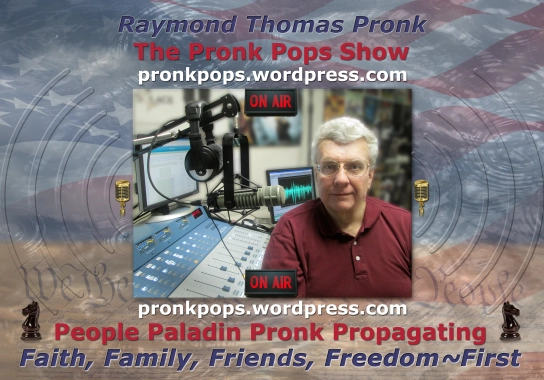










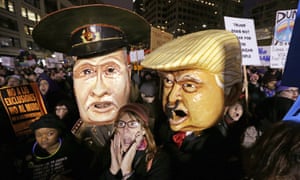




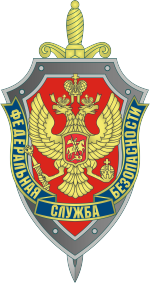
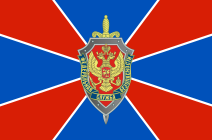


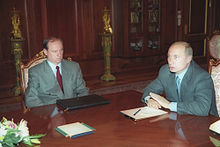

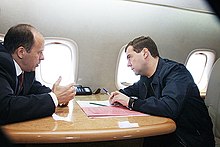
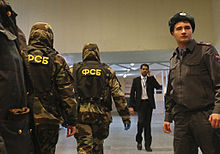


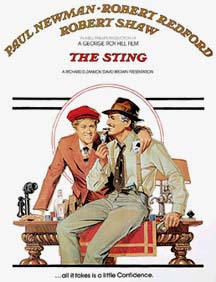




























You must be logged in to post a comment.